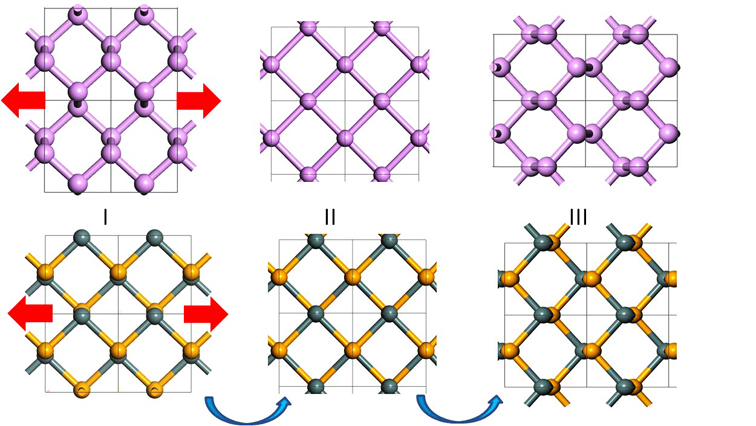On April 26th, Professor Menghao Wu in School of Physics made breakthrough in research on 2D ferroelectric/ferroelastic materials in Nano Letters, entitled as “Intrinsic Ferroelasticity and/or Multiferroicity in Two-Dimensional Phosphorene and Phosphorene Analogues”.
It is known that ferroic (ferromagnetic, ferroelectric, or ferroelastic) materials have important applications as non-volatile memory. However, little research has been reported on feasible ferroic memory in low-dimensional systems, in light of that 2D materials like graphene or phosphorene are expected to play important role in future nanoelectronics. To our knowledge, only a few studies on 2D ferroelectric or ferroelastic materials have been reported in the literature, and little on the multiferroic materials that entail two ferroic order parameters simultaneously. The Curie temperature Tc of most low-dimensional ferromagnetic structures is far below room temperature, while for those with a relatively high Tc none appears to be stable in the ambient condition. Compared with ferromagnetism, however, ferroelectricity or ferroelasticity in low-dimension materials may survive at a relatively higher temperature so long as the crystal structure is intact. Moreover, unlike the ferromagnetism (most ferromagnetic materials are metallic), neither ferroelectricity nor ferroelasticity is incompatible with semiconductivity. It is therefore conceivable to combine semiconductivity for signal manipulation with ferroics for non-volatile memory in the same 2D material. This combination has long been one of primary goals in the study of diluted magnetic semiconductor since the beginning of this century, although its practical application is still hindered today by the issue of low Tc.

Through collaborations with Professor Xiao Cheng Zeng in University of Nebraska, Menghao Wu demonstrated by first-principles calculations that phosphorene and phosphorene analogues (SnS, SnSe, GeS, GeSe monolayers) are potentially the long-sought 2D materials that can combine electronic transistor characteristic with non-volatile memory readable/writeable capability at ambient condition. Specifically, phosphorene is predicted to be a 2D intrinsic ferroelastic material with ultra-high reversible strain, while SnS, SnSe, GeS, GeSe monolayers are multiferroic with coupled ferroelectricity and ferroelasticity. Moreover, their notable structural anisotropy enables ferroelastic or ferroelectric switching readily readable via electrical, thermal, optical, mechanical or even spintronic detection upon the swapping of the zigzag and armchair direction. In addition, it is predicted that the GeS and GeSe monolayers as well as bulk SnS and SnSe can maintain their ferroelasticity and ferroelectricity (anti-ferroelectricity) beyond the room temperature, suggesting high potential for practical device application.
Menghao Wu joined School of Physics of HUST as a professor in December of 2014. He has been working in the fields of theoretical calculations on low-dimensional nanostructures in the past few years. The paper introduced above is another breakthrough in 2D van der Waals materials after his last publication in Nano Letters in April 2015.
The research is supported by the National Natural Science Foundation of China.
Link: http://pubs.acs.org/doi/abs/10.1021/acs.nanolett.6b00726?journalCode=nalefd
